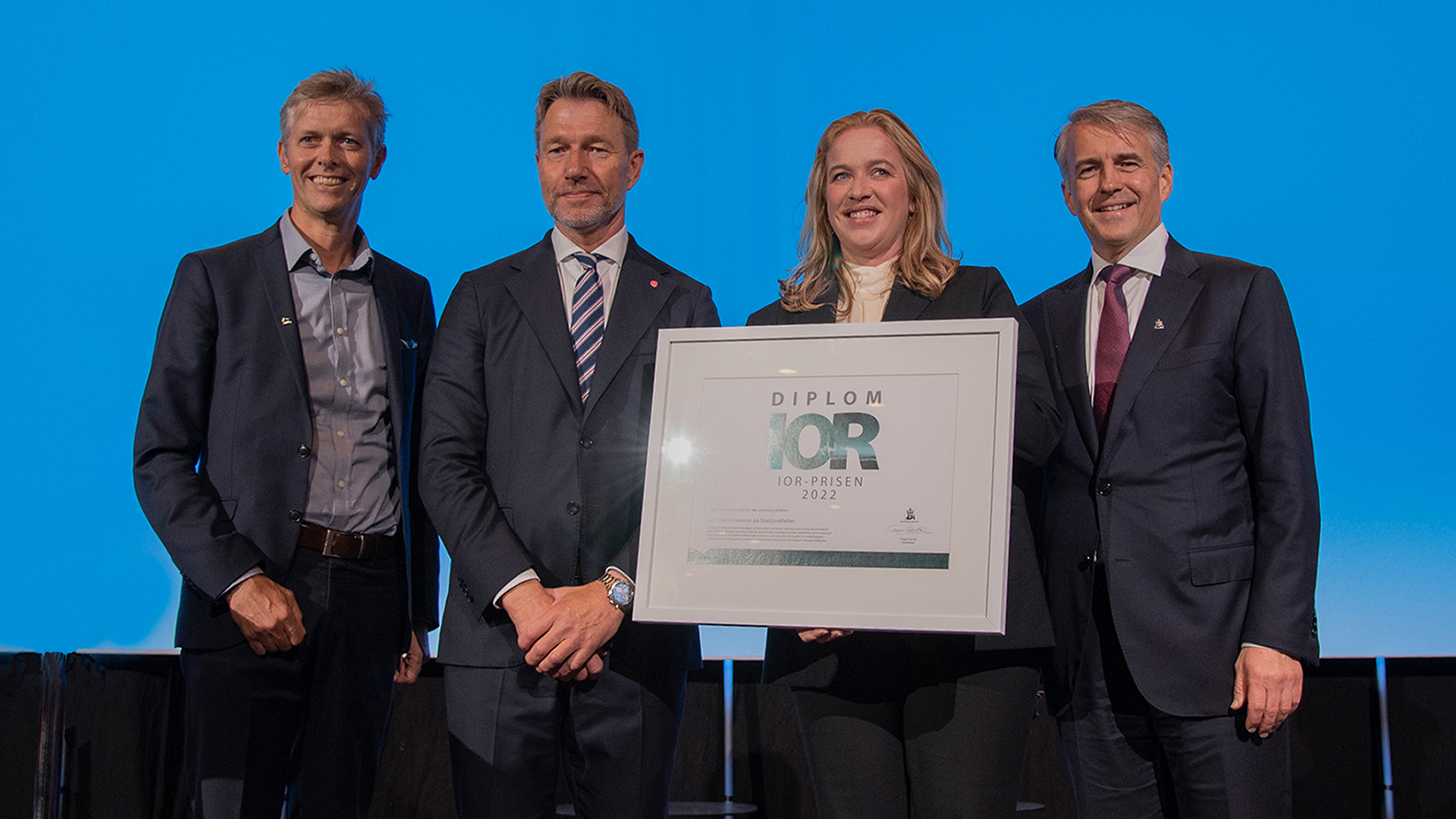IOR award recognises systematic, long-term efforts

Proud winners of IOR 2022: In picture from left to right: Jan Seglem, Manager West, Partner Operated Assets, Vår energi, Minister of Petroleum and Energy Terje Aasland (Labour Party) Camilla Salthe, Senior vice president, Field life extension, Equinor and Director General (interim) Torgeir Stordal.
8/30/2022 The licensees on the Statfjord field in the North Sea receives the Norwegian Petroleum Directorate's award for improved recovery (the IOR award) for utilising a number of IOR measures that contribute to the world-class recovery rate.
Equinor (operator) and Vår Energi have consistently demonstrated their ability to utilise technology to increase recovery from the field. This has led to an almost 40-year extension of the projected production lifetime for the Statfjord field, compared with the original plan for the field.
Extensive use
This year's winner – the 17th since the first award in 1998 – has played an important role in the 50 years of history on the Norwegian shelf. Director General Torgeir Stordal states that, "it's a pleasure to present the IOR award to Equinor and Vår Energi for their extensive use of recovery methods and cutting-edge technology over many years."
Statfjord came on stream in November 1979, and – based on current plans – could keep producing until 2040. At that point, the field will have been producing for 60 years. When the plan for development and operation was submitted to the authorities in 1976, production was projected to last until 2003.
Various methods
A wide range of methods have been - and continue to be – used on Statfjord. These include various water and gas injection methods, horizontal and multi-branch wells, gas cap blow-down, improved seismic imaging of the subsurface, technology for improved sand control in the wells, as well as well-plugging technology.
These efforts have paid off. Reserves on Statfjord have increased by ten per cent since the year 2000. This volume is the equivalent of more than two Goliat fields or one Edvard Grieg field.
The recovery rate for oil from the Statfjord field is actually 68 per cent; the highest on the Norwegian shelf. The average recovery rate is 46 per cent for oil fields. As of June 2022, Statfjord has produced 577 million standard cubic metres of oil (3.6 billion barrels) since it came on stream.
New goals
Equinor and Vår Energi have set new, ambitious recovery goals. Their plans include more than 100 new wells.
The Norwegian Petroleum Directorate also wants to commend previous licensees, and particularly Spirit Energy, which have also been a driving force for the encouraging plans presented leading up to 2040.
Long-term efforts
"Today, I'm very proud to accept the Norwegian Petroleum Directorate's IOR award for the efforts to improve recovery in the Statfjord licence, alongside our partner Vår Energi," says Camilla Salthe, Equinor's Senior Vice President of Field Life Extension.
She points out that this was made possible as a result of targeted and long-term efforts over a number of years – and she thanks everyone who has contributed to ensure sound resource utilisation on Statfjord over many years.
"Safe and efficient operations through new ways of working, that’s our cornerstone. Together, we've been able to make room for new investments, thereby extending the lifetime on Statfjord," Salthe says.
Partner Vår Energi also thinks the IOR award is prestigious, and Jan Seglem, Vår Energi’s Manager West, Partner Operated Assets, says that he is very proud of what we have achieved in the Statfjord licence along with Equinor:
"Our IOR commitment is in line with our long-term growth strategy, and it supports our goals to ensure optimal resource utilisation and efficient operations on the Norwegian shelf. Vår Energi is an active partner in all licences and we will continue our efforts to improve oil and gas recovery – efforts we believe are essential in order to ensure long-term and sustainable value creation from the shelf."
Director Communication, public affairs and emergency response
Updated: 8/30/2022